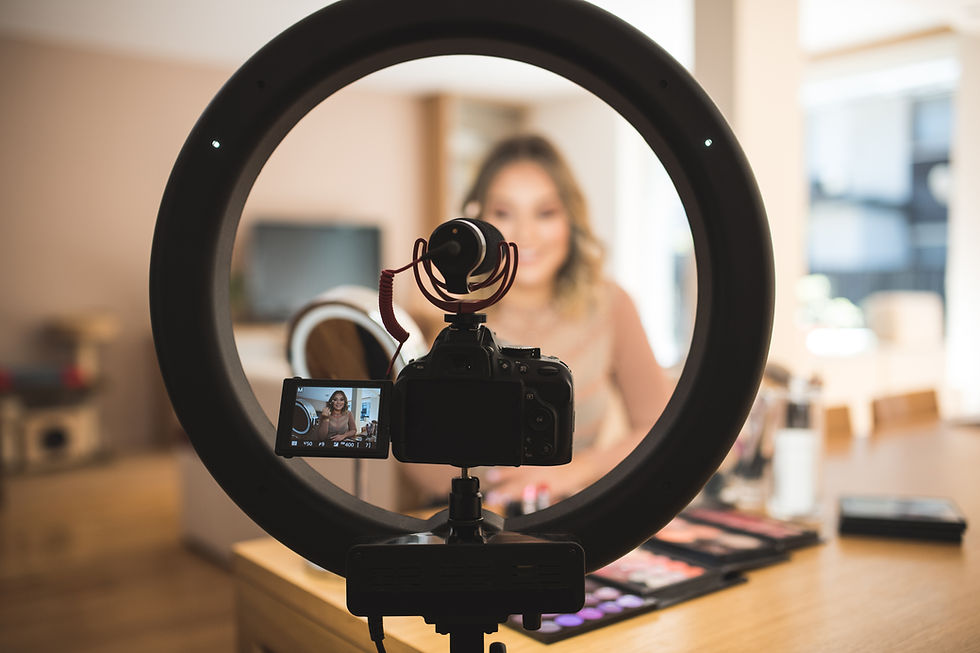Affiliate Marketing and Influencer Marketing Merge
- Paul Bucalo
- Dec 28, 2024
- 3 min read
Updated: 56 minutes ago

I was mentoring an entrepreneur the other day about starting an affiliate business and I realized the world of affiliates and the world of influencers are beginning to merge like a Venn diagram.
If you tap AI, it will neatly summarize the steps to create an affiliate business:
To build an affiliate marketing business, you need to: select a niche, find relevant affiliate programs within that niche, create high-quality content that aligns with your audience's interests, establish a platform to distribute your content (like a blog or social media), drive traffic to your platform, and promote affiliate links within your content to generate commissions by encouraging your audience to purchase products through your unique links. [1, 2, 3, 4, 5, 6, 7] – Gemini
In my experience, the best affiliate marketers are also influencers, and vice versa. The top influencers are paid by the post, but their ranks are represented by people who are already superstars in other areas. [8]
So, what is a marketer to do?
Use data and experience to identify your niche. All great content is born from great experience (write what you know, as the saying goes). But use social listening tools like Sprinklr, Sprout, HubSpot and many others to find your micro-niche. [9] These are paid tools, but most have free trials. Google Zeitgeist is notably free.
Create quality content. Generative AI is great, but great content goes beyond what an AI can regurgitate. Leverage the experience you have established in the step above to provide value to the AI output.
Ana White, the DIYer, has one of the best platforms for demonstrating the overlap of influencer and affiliate marketer. She’s sponsored by Kreg in a more traditional affiliate style, but her content garnered media attention. By focusing on content her audience can use, like free plans and how-to videos, she leveraged her affiliate blog into a gig on HGTV.com and multiple media appearances.
Start with one channel. Develop a disciplined cadence of releasing content on a single channel and reach a key milestone, like 10K followers, before expanding. The same social listening tools listed above can assist in finding the right channel for your specific niche.
Ana White started with a blog. Maria Fassrainer started as an Instagram influencer and grew to other channels. [10] Her goals were to share a passion for makeup and practice English, but eventually she leveraged her audience with affiliate programs. This allowed her to quit her day job and focus on influencing full-time.
The audience is the value. Don’t get distracted with revenue in the early stages. Laser focus on what your audience wants as it develops. A true organic audience of loyal followers will always be valuable. Pushing products or placements before securing loyalty or understanding your audiences’ tastes will come off as salesy. Stay authentic. The money will come, and it may be in a way you never imagined.
The TryGuys.com [11] started with comedic content and no discernable plan for monetization. Eventually, they added advertising and moved away from walled garden platforms, like YouTube.com, to develop their own streaming and monetization platform.
Finally, develop strong analytics. Lay the groundwork to demonstrate your audiences’ value through detailed journey tracking. You can use tools like Google Analytics, HubSpot and TrackDesk. Even if you are not monetizing the audience, the data is how you will find and leverage the monetization opportunity.
Conclusion
Affiliate marketing and influencer marketing are merging. Take the best lessons from each, like focusing on driving audience through engaging content and leveraging detailed data tracking to build a loyal following.
Sources:







Comments